This article was co-authored by Zora Degrandpre, ND. Dr. Zora Degrandpre is a Natural Health Doctor and Licensed Naturopathic Physician in Vancouver, Washington. She is a grant reviewer for the National Institutes of Health and the National Center for Complementary and Alternative Medicine. She received her ND from the National College of Natural Medicine in 2007.
There are 8 references cited in this article, which can be found at the bottom of the page.
wikiHow marks an article as reader-approved once it receives enough positive feedback. This article has 17 testimonials from our readers, earning it our reader-approved status.
This article has been viewed 3,092,764 times.
Brown skin spots, also called age spots, liver spots, or sunspots, are very common on people over 50 years old. Luckily, they aren’t harmful, and develop because the sun causes your skin cells to produce too much pigment.[1] It's still fine if you want to get rid of them. The most common treatments are skin-lightening creams, laser treatments, or chemical peels performed by your dermatologist, but you may be curious about home remedies to lighten these spots. While many home remedies don’t work, a few have some research supporting them. You can try these tips out to see if they help you. If not, then speak to your dermatologist for further treatments.
Steps
Effective Natural Treatments
There are a lot of home remedies for lightening skin and treating dark spots online, but be careful—many of these don’t work, and some could be dangerous. Luckily, there are natural remedies that do show some success. Try these out for yourself to see if they work. If you experience any negative effects like itching or irritation, then stop using these creams right away.
-
1Fade the spots with glycolic or kojic acid creams. These are 2 popular ingredients in skin-lightening creams. You should be able to get creams containing either without a prescription, so check a pharmacy for the right one.[2]
-
2Prevent further darkening with aloesin. Aloesin comes from the aloe vera plant and helps helps stop skin from producing too much pigment. Check a pharmacy or online for this. Apply the cream 4 times a day for 15 days to prevent the spots from getting darker.[3]
- Aloesin is not the same as pure aloe vera, so don’t confuse the two.
Advertisement -
3Try mulberry leaf extract. Mulberry extract successfully lightened dark spots in a study when compared to a placebo, so it could work for you. Rub a 75% extract oil onto your dark spots to see if the spots lighten.[4]
- This is a less common item, so you'll probably need to look online for it.
-
4Rub liquiritin cream on your dark spots. This compound found in licorice might lighten your skin almost as well as conventional lightening creams. Try rubbing a 20% liquiritin cream onto your skin daily to see if it works.[5]
- Licorice extract also showed some success in lightening dark spots, but only when mixed with other ingredients.
-
5Use cream with niacinamide to moisturize dark spots. Niacinamide, a type of vitamin B3, is an effective skin moisturizer and might help lighten dark spots. Try applying a 4-5% niacinamide cream to your brown spots for 9 weeks to see if that helps.[6]
-
6Nourish your skin with vitamin C cream. Vitamin C can also help fade brown spots, so get a cream with this ingredient and see if it works for you. These creams should be available at pharmacies.[7]
-
7Don’t use lemon juice, bleach, or abrasive rubs on your skin. Some home remedies might be dangerous. Placing acidic or irritating things on your skin like lemon juice, vinegar, and bleach can be harmful to your skin. Also, store-bought abrasive rubs could do more harm than good, so skip these as well.[8]
- A microdermabrasion could help lighten brown spots, but only if a professional dermatologist does it. Home treatments could be dangerous.[9]
- If you have any doubts about what’s safe to put on your skin, ask a dermatologist.
Approved Medical Treatments
There are actually a few topical treatments for brown spots that are not only medically-approved but easy to do at home. You can get some of these creams over-the-counter but may need a prescription for stronger types. Talk to your dermatologist to pick the best one for you. If they don't work, you can also try office treatments like laser therapy or dermabrasions to get rid of the spots.[10]
-
1Use 2% hydroquinone cream for a conventional treatment. Hydroquinone (HQ) is a common skin-lightening cream, and probably what a dermatologist will recommend for you to start with. A 2% concentration should be available over the counter without a prescription, so get a bottle from a pharmacy. Wash your skin first, then rub the cream onto your brown spots. Repeat this once per day.[11]
- HQ takes about 4 weeks to show results.
- You can also get a stronger HQ type with a prescription from your dermatologist.
-
2Ask your dermatologist for a retinoid prescription. Retinoids are topical steroid creams that are used for many issues, including acne, wrinkles, and brown spots. You'll probably need a prescription for this medication, so ask your dermatologist if it's right for you.[12]
- Retinoids may cause some irritation if you have sensitive skin, so stop using the cream if you experience any problems.
-
3Apply 20% azelaic acid cream. This compound can lighten skin and shows some success in treating brown spots almost as well as HQ, or better in some cases. Try applying the cream once a day for 2 months to see if your brown spots improve.[13]
- This cream may be more successful if you pair it with professional chemical peels, so discuss this treatment with your dermatologist.
Preventing Spots from Getting Darker
The main reason that dark spots form and get worse is sun exposure. The best way to stop your current spots from getting darker, and preventing new ones from forming in the first place, is protecting your skin from the sun. This might even help your dark spots fade over time. Take the following steps to protect your skin from harmful UV rays.
-
1Apply 30 SPF sunblock every time you go outside. Even if it’s cloudy or raining, you’ll still get some sun exposure. Every time you leave your home, apply at least 30 SPF sunblock to all of your exposed skin to protect it from UV rays.[14]
- Get a sunblock designed for oily skin labeled “won’t clog pores” if you have acne often.
- Reapply sunblock every 2 hours if you’re outside for a long time. If you’re swimming, reapply it when you come out of the water.[15]
- It’s best to apply sunblock 15-30 minutes before going outside so you have the best protection possible as soon as you go out.
-
2Stay inside when the sun is strongest. This might not be ideal, but it's the best way to stay safe during the sunniest parts of the day. Normally, this is between the hours of 10 AM and 2 PM. During these hours, the sun’s rays are strongest and could do the most damage to your skin. Try to arrange your schedule so you can stay inside during these hours and avoid exposure.[16]
- If you do have to go outside, try to stay in the shade as much as you can.[17]
-
3Cover yourself with clothing, sunglasses, and a hat on sunny days. On sunny days when you have to go outside, sunblock might not be enough. Cover your skin as much as possible with light clothes to block as many UV rays as possible. Don't forget to grab a hat as well.[18]
- You can get clothes designed for UV protection. Try to find clothes labeled UPF 40 or 50 to block more UV light.
-
4Install a UV-blocking coating on the driver’s side of your car. You might not expect it, but you can get a lot of sun exposure while you’re driving. Protect yourself on the road by installing a UV-blocking shield on your driver’s side window. This way, you can reduce your UV exposure on long drives.[19]
Medical Takeaways
While many home remedies don’t help treat brown spots, there are a few that do show some success. They shouldn’t cause any harm, so you can try them out for yourself. Whether you use home remedies or professional treatments, always take steps to protect your skin from the sun to prevent your brown spots from getting worse. With the right treatment, dark spots should clear up in a few weeks.
Warnings
- Brown spots are a sign that you’re getting too much sun, so take steps to protect yourself from more sun exposure.⧼thumbs_response⧽
- Brown spots aren’t harmful, but some forms of skin cancer could look similar. See a doctor right away if any spots on your skin are black, multicolored, growing, bleeding, or have an uneven border.[21]⧼thumbs_response⧽
References
- ↑ https://www.asds.net/skin-experts/skin-conditions/hyperpigmentation
- ↑ https://www.mayoclinic.org/diseases-conditions/age-spots/diagnosis-treatment/drc-20355864
- ↑ https://www.ncbi.nlm.nih.gov/pmc/articles/PMC5843359/
- ↑ https://www.ncbi.nlm.nih.gov/pmc/articles/PMC5843359/
- ↑ https://www.ncbi.nlm.nih.gov/pmc/articles/PMC5843359/
- ↑ https://www.ncbi.nlm.nih.gov/pmc/articles/PMC5843359/
- ↑ https://www.aad.org/public/everyday-care/skin-care-secrets/routine/fade-dark-spots
- ↑ https://www.asds.net/skin-experts/skin-conditions/hyperpigmentation
- ↑ https://www.mayoclinic.org/diseases-conditions/age-spots/diagnosis-treatment/drc-20355864
- ↑ https://www.mayoclinic.org/diseases-conditions/age-spots/diagnosis-treatment/drc-20355864
- ↑ https://www.aocd.org/page/Hydroquinone
- ↑ https://www.health.harvard.edu/newsletter_article/Topical_drug_treatments_for_age_spots
- ↑ https://www.ncbi.nlm.nih.gov/pmc/articles/PMC5843359/
- ↑ https://www.aad.org/public/everyday-care/skin-care-secrets/routine/fade-dark-spots
- ↑ https://www.mayoclinic.org/diseases-conditions/age-spots/symptoms-causes/syc-20355859
- ↑ https://www.mayoclinic.org/diseases-conditions/age-spots/symptoms-causes/syc-20355859
- ↑ https://www.asds.net/skin-experts/skin-conditions/hyperpigmentation
- ↑ https://www.asds.net/skin-experts/skin-conditions/hyperpigmentation
- ↑ https://health.clevelandclinic.org/think-beauty-spots-arent-cute-heres/
- ↑ https://www.asds.net/skin-experts/skin-conditions/hyperpigmentation
- ↑ https://www.mayoclinic.org/diseases-conditions/age-spots/symptoms-causes/syc-20355859
About This Article
To get rid of brown spots on your face, try cutting a lemon into slices and holding one against your spots for about 30 minutes. Then, rinse the lemon juice off with cool water. Alternatively, mash the pulp of a papaya or pineapple in a bowl and use a cotton swab or make-up brush to apply it to your face, which will help breakdown the melanin of your spots. Leave the mask on until it dries, then rinse it off with cool water. Whichever method you use, repeat the process a few times a week to improve the appearance of your spots. For more tips from our Medical co-author, including how to make a yogurt face mask to get rid of your brown spots, read on!
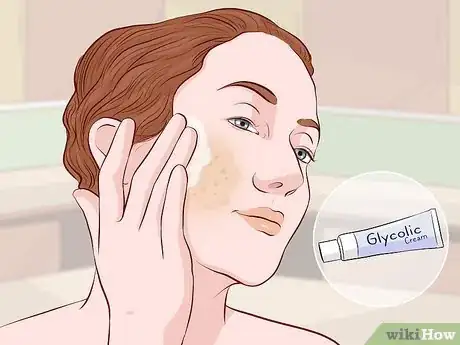
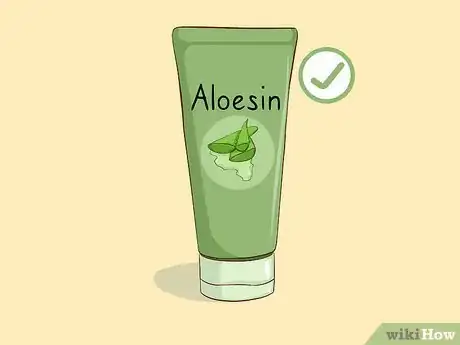




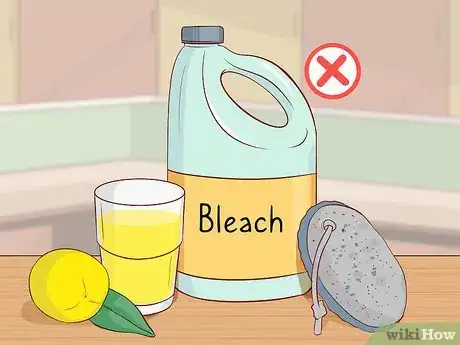

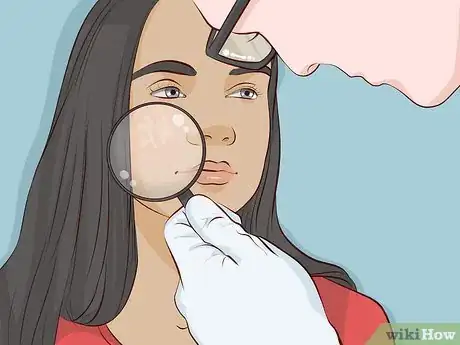







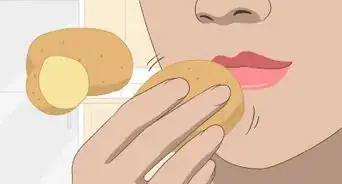


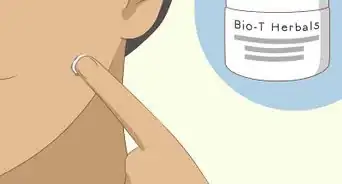

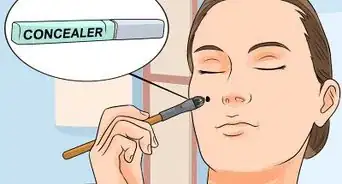
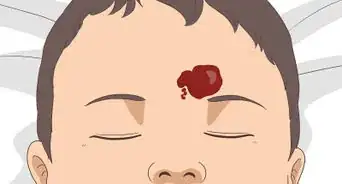


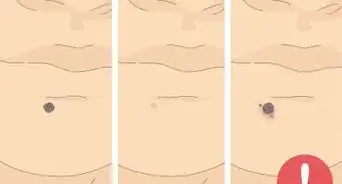














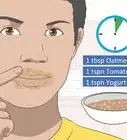



































Medical Disclaimer
The content of this article is not intended to be a substitute for professional medical advice, examination, diagnosis, or treatment. You should always contact your doctor or other qualified healthcare professional before starting, changing, or stopping any kind of health treatment.
Read More...